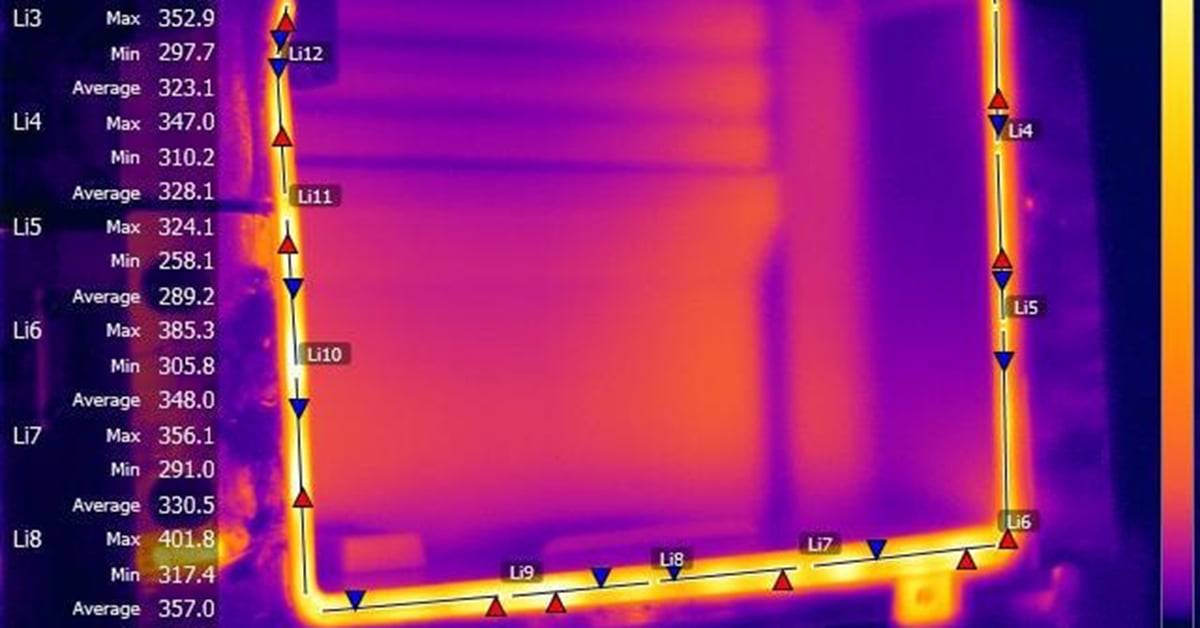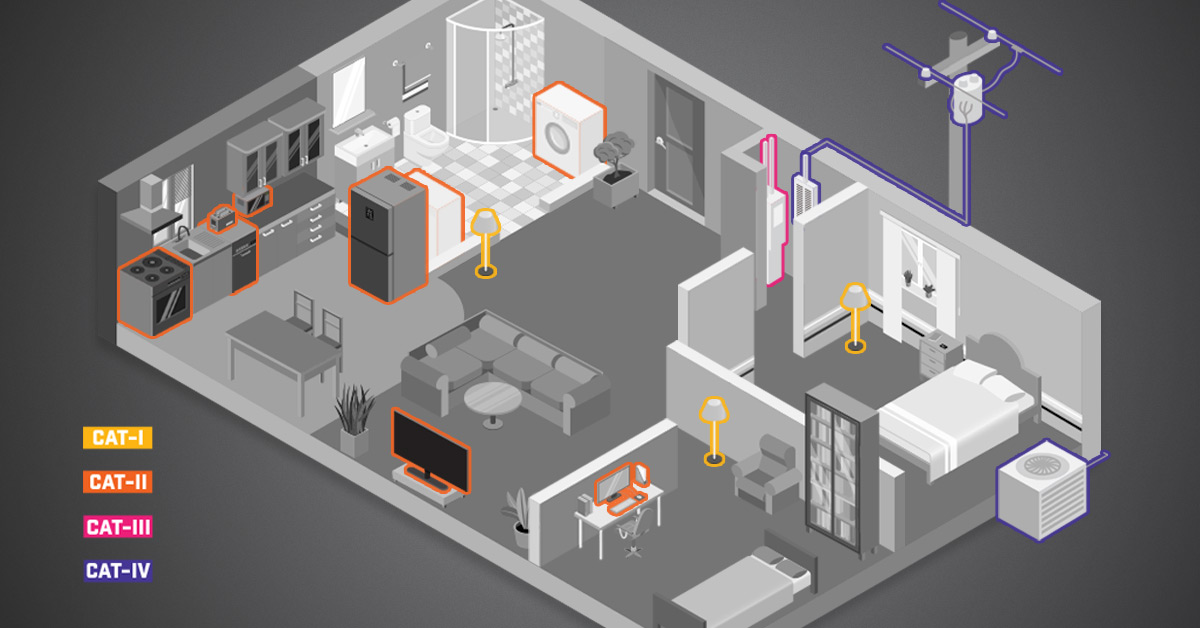FLIR GF320 Used to Detect Leakage in Biogas Facilities
Just a few years ago a majority of the biogas facilities in Germany had leaks, as measurements of the past years have shown. Awareness of biogas operators has since been increased using gas camera technology to easily show leaks. Biogas leaks not only result in losses with regard to system efficiency, but also represent potential risks for health and the environment. Security-relevant aspects also aris when escaping gases form explosive mixtures and place people and the facility in danger.
The mission of biogas damages economic efficiency, the environment and acceptance
Biogas (methane) is one of the gases, which can escape from leaks in biogas facilities in various places and have a significant role impact on the safe and economic operation of the plant. IBS GmbH, which is headquartered in Bremen, Germany, specializes in in-process analysis and detecting gas leaks in biogas facilities. The company chose the FLIR GF320 for leak detection in order to provide its clients with the highest gas efficiency and the lowest risk of down-time possible. “If gone undetected, even the smallest gas leaks can cause serious financial damage over time” says Ibeling van Lessen, one of the managing directors of the Bremen based company. The engineer has been using the FLIR GF320 for the past two years to assess leakage in biogas facilities and has examined more than 150 biogas plants to date. Gas leaks are also to be avoided for environmental reasons and with regard to popular acceptance.
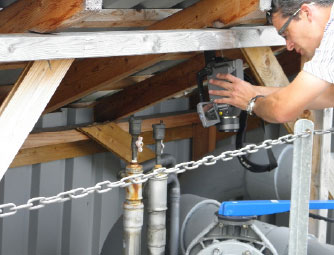
The company learned about using thermography to detect leakage of organic gases, and especially biogas, at a trade fair. “We then had a FLIR representative, who is also an experienced consultant and user, demonstrate the technology at one of our customers.”
Large facilities require flexible gas localization systems
Especially in the area of biogas, the utmost flexibility and compactness is required and the FLIR GF320 perfectly fits the bill. The main problem with leak detection in the field of biogas is the enormous size of many facilities and the sheer volume of components involved. On the other hand, difficult accessibility when trying to localize leaks on fermenter roofs for example prevents fast and effective detection of escaping gases using conventional means. Therefore van Lessen’s expectations of a camera are quite high. The main focus before the purchase was on finding reliable technology with little susceptibility to malfunction with a sufficient resolution to detect even small leaks from a distance. The system’s compactness and mobility was equally important to allow for inspecting even difficult to access components in biogas facilities using the camera. “The camera is so compact that it can be easily carried even when using ladders”, explains the leak localizing expert.
Conventional gas detection measure are time-intensive and susceptible to malfunction
Before the sophisticated technology was used, gas sensing devices and leakage sprays were used to discover leaks in biogas facilities. However, the reliability of these methods is limited, because these tools only work when all system components are directly accessible. At the place where the tank meets the roof, the inner gas membrane, the eyelets for the submersible mixers or holes in the tank walls, using leak spray and sensors is particularly difficult and sometimes even impossible. The investigation of an entire biogas facility with these tools is this very time consuming, which is also connected with a corresponding cost to the customer. The FLIR GF320 solves this problem almost entirely, because even difficult to access components can be examined from the ground.
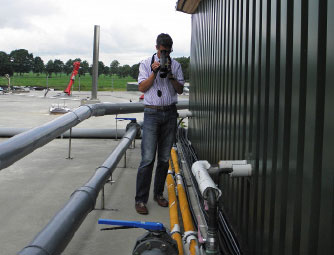
Reliable leak detection requires experience
Gas leaks are shown on grey-scale video, in which the gas stands out like a cloud against the background. Changing locations and appropriate viewing times ensure that small gas leaks are not overlooked. Due to the integrated and patented image analysis software (HSM), gas leaks are particularly easy to detect in the moving images, whereas black and white JPEG pictures of escaping gases require quite some interpretive skill. “Some experience in image interpretation is necessary to perform reliable leakage localization and assessment”, says Ibeling van Lessen. He found the user training by the specialist company ITEMA GmbH to be particularly helpful, as it provided precise instructions on handling and operating the camera by qualified personnel in several on-site sessions. The special FLIR software for subsequent documentation came in quite handy as well. The advantage of the software primarily consists of the sophisticated documentation it offers for the examined biogas facilities and the ease of use that requires only a short training period. Found leaks can be marked directly in the image and also recorded as a video sequence using the camera software. Therefore damaged areas can subsequently repaired by the customer and success of the measures can be checked without much effort in a follow-up appointment.
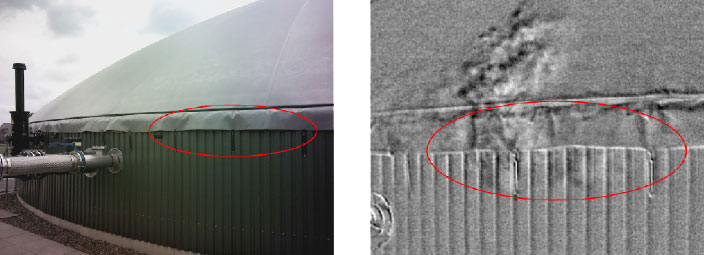
The FLIR camera allows for maximum mobility
The decision for the FLIR GF320 was relatively easy for IBS GmbH because the camera has no real competition in terms of compactness and the possibility of mobile usage. “Its light weight allows for ergonomic working in any position and the ease of use rounds off the gas camera’s design”, says Ibeling van Lessen. Last but not least, the FLIR camera’s price, which is lower than that of the competition, helped make the decision even easier for the businessman from Bremen. “You can not only detect methane, but gas mixtures as well”, a fact which is especially helpful when inspecting another system component, the CHP. Petrol or diesel fumes can be visualized with the FLIR gas camera and exhaust leaks on the turbocharger can be specifically detected for example. Due to its compact and protected design, the camera can be used in conjunction with an explosion meter in explosive environments.
Conclusion: Added value for users and customers
Looking back, using the gas camera has provided significant added value for IBS GmbH and its customers. In addition to ensuring optimized operation by way of in-process analytics, using the gas camera can help biogas facility operators quickly and safely detect the smallest gas leaks and thus increase system efficiency even more in many cases. The patented camera technology provides security while eliminating the need for manually making colour markings by modifying computer parameters.

